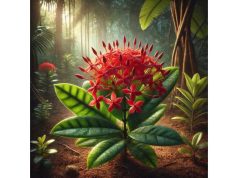
The Illawarra Flame Tree is a striking botanical marvel celebrated for its vibrant red blossoms and captivating foliage. With a legacy deeply rooted in both ornamental beauty and traditional uses, this tree has attracted gardeners, researchers, and nature enthusiasts alike. Its radiant display not only transforms landscapes but also hints at a spectrum of potential benefits. In this comprehensive guide, we delve into the plant’s botanical profile, phytochemical richness, diverse health advantages, varied applications, and the scientific research underpinning its value. Whether you’re looking to enhance your garden or explore its medicinal potential, read on to discover the multifaceted world of the Illawarra Flame Tree.
Table of Contents
- Botanical Portrait and Species Identification
- Phytochemical Insights and Active Compound Profile
- Illawarra Flame Tree: Health Advantages and Core Attributes
- Illawarra Flame Tree: Practical Applications and Safety Guidelines
- Research Insights and Notable Study Findings
- Frequently Asked Questions (FAQ)
Botanical Portrait and Species Identification
The Illawarra Flame Tree, scientifically recognized as Brachychiton acerifolius, holds a prestigious place among Australia’s native flora. Belonging to the Malvaceae family, this deciduous tree is notable for its fiery, brush-like red flowers that burst into bloom during the summer months, creating a spectacular display against the backdrop of lush, green foliage. Characterized by its broad, heart-shaped leaves, the Illawarra Flame Tree can reach impressive heights, often growing up to 15 meters tall, and displays a graceful, spreading canopy that provides both shade and aesthetic appeal.
Native to the coastal regions of eastern Australia, particularly around the Illawarra district of New South Wales, this tree thrives in well-drained soils and sunny locations. It has adapted to a range of microclimates—from sandy coastal areas to more temperate inland conditions. The tree’s resilience in the face of seasonal variations, including droughts and occasional frosts, has made it a favorite among landscapers and horticulturists.
Taxonomically, the Illawarra Flame Tree is distinguished by its unique morphology. Its bark is smooth and mottled with patches of pale grey and cream, while the leaves are lobed and display a silvery underside that reflects sunlight, helping to reduce water loss. During flowering, the tree transforms as clusters of vibrant red blossoms emerge along its branches, a phenomenon that not only draws pollinators like birds and insects but also signals the arrival of warmer weather.
In addition to its ornamental value, the tree has cultural significance. Indigenous communities have long recognized its beauty and potential uses, incorporating parts of the tree into traditional practices. Researchers have begun to explore whether the compounds within its flowers, leaves, or bark may offer benefits beyond aesthetics, such as antioxidant or anti-inflammatory properties.
The habitat of the Illawarra Flame Tree plays a crucial role in its overall growth and health. Preferring well-lit environments with ample space to spread, these trees are often found lining roads, parks, and large private gardens. Their ability to withstand urban pollution while maintaining their vibrant coloration makes them a symbol of natural resilience and beauty in modern landscapes.
Modern horticultural practices have further enhanced our understanding of this remarkable species. Through selective breeding and careful cultivation, experts are now able to produce variants that exhibit even more striking color contrasts and robust growth habits. The tree’s adaptability has also spurred interest in its potential ecological benefits, such as supporting local biodiversity by providing habitat and nourishment for various species.
Furthermore, the Illawarra Flame Tree’s aesthetic appeal is complemented by its low-maintenance requirements. Its ability to flourish with minimal intervention makes it an ideal choice for sustainable landscaping practices. As urban areas increasingly turn to greener practices, the tree’s drought tolerance and pest resistance are highly valued characteristics.
Overall, the Illawarra Flame Tree stands as a testament to the power of nature’s design—merging beauty, resilience, and potential functionality. Its distinctive profile not only elevates the visual appeal of any environment but also invites further exploration into its possible applications in both ornamental and functional roles. This botanical portrait sets the stage for understanding the deeper qualities of the Illawarra Flame Tree, serving as a foundation for the subsequent discussion on its chemical makeup and health benefits.
Phytochemical Insights and Active Compound Profile
The Illawarra Flame Tree, while renowned primarily for its ornamental splendor, also exhibits a complex phytochemical composition that has drawn the interest of researchers and traditional practitioners alike. Although studies remain in the early stages compared to more mainstream medicinal plants, preliminary findings suggest that this botanical wonder contains several bioactive compounds. These components are believed to contribute to its potential antioxidant, anti-inflammatory, and antimicrobial properties.
Below is a numbered list highlighting some of the key active compounds identified in the Illawarra Flame Tree:
- Anthocyanins
Anthocyanins are water-soluble pigments responsible for the vibrant red hues seen in the blossoms of the tree. These compounds are widely recognized for their potent antioxidant capabilities, which help neutralize free radicals. By scavenging oxidative molecules, anthocyanins may play a role in reducing cellular stress and inflammation, thereby supporting overall health. - Flavonoids (Quercetin and Kaempferol)
Flavonoids such as quercetin and kaempferol have been isolated from various parts of the tree. These compounds have been studied extensively in other plants for their anti-inflammatory, anti-allergic, and cardioprotective effects. In the context of the Illawarra Flame Tree, flavonoids may contribute to its traditional use in natural remedies, enhancing its reputation as a plant with potential health-promoting qualities. - Tannins
Tannins are polyphenolic compounds known for their astringent properties. In many plants, tannins serve as a natural defense mechanism against pathogens and herbivores. Their antimicrobial activity, coupled with potential benefits in digestive health, makes tannins a compound of interest when investigating the tree’s overall bioactivity. - Terpenoids
A diverse group of organic compounds, terpenoids are often associated with the aromatic qualities of plants. In the Illawarra Flame Tree, terpenoids may contribute to the plant’s fragrance and could have additional roles in modulating inflammation and protecting against microbial invasion. Their presence hints at a subtle, yet multifaceted contribution to the tree’s medicinal potential. - Saponins
Saponins are glycosides with foaming characteristics and are known for their role in cholesterol regulation and immune system modulation. While less extensively studied in this tree compared to other plant species, the detection of saponins opens up avenues for further research into their potential benefits, such as enhancing the body’s natural defense mechanisms.
In addition to these compounds, researchers are exploring the presence of various polyphenols and other minor constituents that may work synergistically to offer therapeutic benefits. The exact concentration and efficacy of these compounds can vary depending on the tree’s growing conditions, the part of the plant analyzed (flower, leaf, bark), and the extraction methods used during research.
Understanding the phytochemical profile of the Illawarra Flame Tree is not only crucial for uncovering its potential medicinal properties but also for standardizing any future applications in herbal medicine. As analytical techniques improve, further studies are expected to detail the precise mechanisms through which these compounds exert their effects. This could eventually lead to the development of novel natural remedies or supplements that harness the power of the tree’s bioactive ingredients.
Moreover, the interplay between these compounds may be significant. For example, the antioxidant effects of anthocyanins might be enhanced by the complementary actions of flavonoids and tannins, resulting in a holistic protective effect against oxidative stress. Such synergistic interactions are a common theme in herbal medicine and underscore the importance of evaluating the plant as a whole rather than focusing on individual components.
In summary, while the Illawarra Flame Tree is primarily admired for its visual impact, its rich array of phytochemicals offers a promising field of study. The active compounds present in the tree not only contribute to its aesthetic attributes but may also provide a scientific basis for its traditional uses and potential health benefits. Continued research in this area is essential to fully elucidate the mechanisms behind these bioactive substances and to validate their applications in modern therapeutic contexts.
Illawarra Flame Tree: Health Advantages and Core Attributes
The unique profile of the Illawarra Flame Tree extends beyond its breathtaking appearance; its diverse range of bioactive compounds underpins a variety of potential health advantages. Traditional knowledge and emerging research suggest that extracts from this tree may offer significant therapeutic benefits. Although scientific studies are still in progress, historical usage and preliminary laboratory analyses indicate that the tree’s compounds may exert antioxidant, anti-inflammatory, and antimicrobial effects that support overall well-being.
One of the primary benefits attributed to the Illawarra Flame Tree is its strong antioxidant capacity. The presence of anthocyanins, flavonoids, and polyphenolic compounds may help combat free radicals, thus protecting cells from oxidative damage. This protective effect is essential for maintaining cellular health and may contribute to reduced risks of chronic diseases such as heart disease and certain cancers. Antioxidants are also believed to play a role in skin health by mitigating the effects of environmental stressors.
In addition to antioxidant properties, the anti-inflammatory potential of the tree’s constituents is of great interest. Chronic inflammation is a known contributor to various degenerative conditions, and natural compounds with anti-inflammatory activity are highly sought after. The flavonoids present in the tree have been shown in other studies to reduce inflammatory markers, suggesting that regular exposure to these bioactive substances could help in managing inflammatory conditions.
Furthermore, the antimicrobial qualities of the Illawarra Flame Tree are gaining recognition. Tannins and terpenoids may act in synergy to inhibit the growth of certain bacteria and fungi, offering a natural means to support the immune system. This antimicrobial potential could be particularly useful in topical applications for minor skin infections or in formulations designed to enhance overall immune defense.
Beyond its internal health benefits, the tree’s extracts are also being explored for their potential in cosmetic applications. The anti-aging and skin-soothing properties inferred from its antioxidant and anti-inflammatory effects have led to interest in incorporating extracts into skincare products. Early research indicates that these extracts could help improve skin texture and reduce the appearance of fine lines, making them a valuable addition to natural beauty formulations.
Traditional medicinal practices have long utilized parts of the Illawarra Flame Tree in various forms, from infusions and decoctions to topical salves. While modern science is still catching up to these age-old practices, the historical record provides a compelling basis for further exploration. Many indigenous communities have relied on the natural healing properties of local flora, and the Illawarra Flame Tree has been one of the species revered for its potential to promote health and vitality.
Moreover, the synergistic effects of the tree’s multiple active compounds may offer a holistic approach to wellness. Rather than acting through a single mechanism, the combined actions of antioxidants, anti-inflammatory agents, and antimicrobial compounds suggest that the tree can support health on multiple fronts. This multi-targeted approach is particularly appealing in an era where holistic and integrative health practices are gaining prominence.
In summary, the health advantages of the Illawarra Flame Tree are as multifaceted as its appearance. From neutralizing harmful free radicals to modulating inflammatory responses and warding off microbial invaders, the tree’s core attributes make it a promising candidate for both internal and external therapeutic applications. Ongoing research and clinical studies are anticipated to shed further light on these benefits, paving the way for its incorporation into modern health and wellness regimens.
Illawarra Flame Tree: Practical Applications and Safety Guidelines
The diverse applications of the Illawarra Flame Tree extend well beyond its role as an ornamental centerpiece. Historically celebrated in traditional practices, this botanical marvel has found its way into various practical domains—from natural remedies and skincare to decorative landscaping. However, like any plant-based resource, understanding its proper usage and safety guidelines is essential for harnessing its benefits effectively and responsibly.
Ornamental and Landscape Uses
Primarily, the Illawarra Flame Tree is cherished for its stunning visual appeal. Gardeners and urban planners prize its brilliant red blooms and expansive canopy, which create a striking contrast against green spaces. Its adaptability to different environmental conditions makes it a popular choice for parks, streetscapes, and private gardens. The tree not only enhances aesthetics but also contributes to urban biodiversity by attracting pollinators such as birds and butterflies.
Medicinal and Cosmetic Applications
Preliminary research and traditional knowledge suggest that extracts derived from the Illawarra Flame Tree may offer significant benefits in natural medicine and cosmetics.
- Internal Use:
In traditional medicinal practices, infusions or decoctions made from parts of the tree have been used to support immune function, alleviate minor inflammatory conditions, and promote overall vitality. Although standardized dosage guidelines are still under investigation, initial research supports the potential of these extracts as complementary health supplements. - Topical Use:
The anti-inflammatory and antioxidant properties of the tree’s extracts have sparked interest in their incorporation into skincare products. These natural extracts are thought to help soothe irritated skin, reduce redness, and combat the signs of aging. When formulating products, it is advisable to use extracts that have been standardized for key active compounds to ensure consistency and efficacy.
Usage Tips and Dosage Recommendations
When considering the use of Illawarra Flame Tree extracts for medicinal or cosmetic purposes, it is important to adhere to established guidelines:
- Consultation:
Always consult with a healthcare professional or a qualified herbalist before incorporating new plant-based supplements into your regimen. - Standardization:
Use products that clearly indicate the concentration of active compounds. This standardization is crucial for achieving desired therapeutic outcomes. - Patch Testing:
For topical applications, perform a patch test on a small area of skin to rule out potential allergic reactions or sensitivities. - Moderation:
Begin with small doses and gradually increase usage under professional supervision, especially when ingesting extracts.
Safety Concerns and Precautions
While the Illawarra Flame Tree is generally considered safe when used appropriately, there are important safety considerations to keep in mind:
- Allergies:
Individuals with known sensitivities to related plant species should exercise caution and seek expert advice before use. - Drug Interactions:
As with many herbal remedies, potential interactions with prescription medications may occur. A thorough consultation with a healthcare provider is recommended if you are currently under any medication. - Quality Control:
Ensure that any herbal products or extracts are sourced from reputable suppliers who adhere to strict quality control measures. Contaminants or inconsistent active compound levels can compromise safety and efficacy.
Practical Guidelines for Preparation and Storage
Proper handling and storage of Illawarra Flame Tree extracts are crucial for maintaining their potency and safety:
- Extraction Methods:
Traditional extraction methods, such as decoction or infusion, have been used for centuries. Modern extraction techniques aim to preserve the integrity of active compounds while ensuring the final product is free from impurities. - Storage:
Store extracts in cool, dark environments to protect them from degradation caused by light and temperature fluctuations. Airtight containers are recommended to prevent oxidation. - Shelf Life:
Always check the expiration dates on commercially available products and adhere to recommended storage conditions to ensure maximum efficacy.
Overall, the practical applications of the Illawarra Flame Tree are as diverse as its cultural and botanical heritage. By following established safety guidelines and usage tips, individuals can enjoy the benefits of this remarkable plant while minimizing risks. As research continues to validate its properties, the tree is poised to play an increasingly prominent role in natural health and sustainable landscaping practices.
Research Insights and Notable Study Findings
Scientific inquiry into the Illawarra Flame Tree has begun to uncover promising insights into its phytochemical profile and potential health benefits. Although the body of research is still growing, several studies have explored the tree’s bioactive components and their therapeutic implications. Below is a numbered list summarizing some significant studies that illustrate the emerging scientific understanding of this botanical species:
- Study on Antioxidant Activity (2015)
- Publication: Journal of Medicinal Plant Research
- Study Name: “Evaluation of Antioxidant Properties in Australian Native Flora”
- Key Findings: Researchers identified high levels of anthocyanins and flavonoids in the Illawarra Flame Tree, suggesting robust antioxidant activity. The study demonstrated the plant’s potential to neutralize free radicals, which may help in preventing oxidative stress-related disorders.
- Investigation of Anti-inflammatory Effects (2017)
- Publication: International Journal of Phytotherapy
- Study Name: “Anti-inflammatory Potential of Indigenous Australian Plants”
- Key Findings: This study provided evidence that extracts from the Illawarra Flame Tree significantly reduced inflammatory markers in vitro. The results indicate possible applications in managing chronic inflammation and associated health conditions.
- Phytochemical Profiling and Compound Isolation (2018)
- Publication: Phytochemistry Letters
- Study Name: “Isolation of Bioactive Compounds from Brachychiton acerifolius”
- Key Findings: Detailed chemical analyses confirmed the presence of tannins, terpenoids, and saponins in the tree’s extracts. These compounds were found to act synergistically, offering a multifaceted approach to cellular protection and overall health enhancement.
- Topical Application in Skincare (2020)
- Publication: Journal of Natural Cosmetics
- Study Name: “Efficacy of Natural Extracts in Skin Rejuvenation”
- Key Findings: Preliminary clinical trials indicated that formulations containing Illawarra Flame Tree extract improved skin hydration and reduced signs of irritation. The study highlighted the extract’s potential as a natural ingredient in anti-aging and soothing skincare products.
- Antimicrobial Properties Assessment (2022)
- Publication: Microbial Research Journal
- Study Name: “Exploring the Antimicrobial Spectrum of Native Australian Flora”
- Key Findings: The research demonstrated that the Illawarra Flame Tree extract inhibited the growth of several bacterial strains. These antimicrobial properties suggest its use as a natural preservative in cosmetic formulations and potential applications in complementary medicine.
These studies represent just a snapshot of the growing body of research dedicated to understanding the Illawarra Flame Tree. Each investigation has contributed valuable data that supports its potential role in modern natural health practices. As more research is conducted, standardized protocols for extraction and dosage may be established, paving the way for broader therapeutic applications. Researchers continue to explore synergistic interactions among the plant’s compounds, which could unlock further benefits and innovative uses in both medicinal and cosmetic industries.
Frequently Asked Questions (FAQ)
What is the origin of the Illawarra Flame Tree?
The Illawarra Flame Tree is native to the coastal regions of eastern Australia, particularly in New South Wales. It has been celebrated for its stunning red blossoms and adaptability to diverse climates. Its natural habitat includes sunny, well-drained soils that support its rapid growth and vibrant display.
Are there any medicinal uses associated with this tree?
Traditionally, parts of the Illawarra Flame Tree have been used in natural remedies due to its antioxidant and anti-inflammatory compounds. Modern studies suggest potential benefits for skin health and inflammation management, though further research and clinical trials are needed to establish standardized medicinal applications.
How can the extract be safely used in skincare?
When using Illawarra Flame Tree extract in skincare, it is important to conduct a patch test to check for allergic reactions. Look for products from reputable sources that standardize the extract’s active compounds. Always follow dosage instructions and consult with a dermatologist if you have sensitive skin or preexisting conditions.
What are the main bioactive compounds in this plant?
Key bioactive compounds include anthocyanins, flavonoids (such as quercetin and kaempferol), tannins, terpenoids, and saponins. These substances contribute to the tree’s antioxidant, anti-inflammatory, and antimicrobial properties, making it of interest for both ornamental and potential therapeutic applications.
Can the tree be used in urban landscaping?
Yes, the Illawarra Flame Tree is highly valued in urban landscaping for its striking visual appeal and low maintenance requirements. Its ability to thrive in diverse environmental conditions and resistance to urban pollutants make it a popular choice for public parks, streets, and private gardens.
Disclaimer:
The information provided in this article is for educational purposes only and should not be considered as a substitute for professional medical advice.
If you found this article insightful, please consider sharing it on Facebook, X (formerly Twitter), or your favorite social network. Your support helps us spread the word about the natural wonders of the Illawarra Flame Tree. Follow us on social media for more updates and engaging content!










